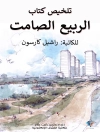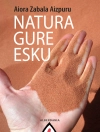In ‘The Diary of a Hunter from the Punjab to the Karakorum Mountains, ‘ Augustus Henry Irby immerses the reader in a vivid, first-hand account of his adventures in the rugged landscapes of northern India. Written in a richly descriptive and observational style, Irby documents the complexities of the natural environment, local cultures, and the thrill of the hunt against the backdrop of the majestic Karakorum Mountains. His narrative oscillates between lyrical prose and detailed depictions of flora and fauna, positioning the book within the travel literature genre of the 19th century, marked by imperial curiosity and a nascent interest in conservation. Augustus Henry Irby, an Englishman and a colonial officer, was profoundly influenced by the Victorian ideals of exploration and discovery. His experiences in the Punjab, a region steeped in cultural diversity and historical significance, coupled with his keen interest in natural history, provided him with a distinct perspective. Irby’s background in the British Raj and his innate love for the outdoors motivated him to document not just his exploits but also the interconnectedness of humanity and nature. This book is a compelling read for those interested in travel literature, hunting narratives, and the intricate relationships between colonialism and ethnography. Irby’s nuanced observations make this diary an invaluable artifact for understanding the landscape and culture of the time, inviting readers to explore the hidden corners of the Punjab and reflect on the legacy of imperial exploration.
Over de auteur
Augustus Henry Irby, an individual often less recognized among the plethora of nineteenth-century travelers, established a modest yet significant niche within travel literature through his sole book, ‘The Diary of a Hunter from the Punjab to the Karakorum Mountains.’ This work not only chronicles Irby’s experiences during his big game hunting expeditions in British India but also offers a captivating glimpse into the rich biodiversity and intricate socio-cultural tapestries of the sub-continent. Irby, an ardent hunter, meticulously recorded his observations, which were hallmarked by vivid descriptions and a keen understanding of wildlife. The diary, published in 1863, stands out for its raw portrayals of the challenges faced by hunters, the rugged landscapes traversed, and the primal beauty of nature untamed. Irby’s prose, while not ornate, is engaging and imbued with the authentic voice of a traveler genuinely enchanted by his surroundings. His work serves not only as a historical record of hunting practices but also as a valuable source for researchers delving into colonial-era attitudes toward exploration and the environment. Despite a relatively limited output, Irby’s literary contribution is cherished for its directness and raw authenticity, qualities which endear ‘The Diary of a Hunter from the Punjab to the Karakorum Mountains’ to both historical and environmental scholars.












